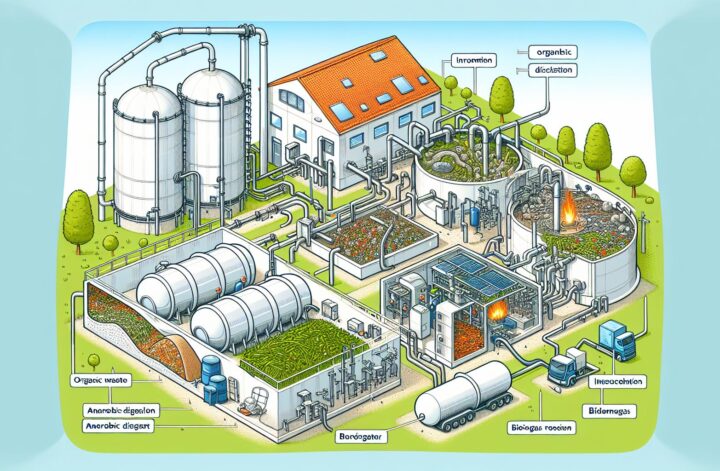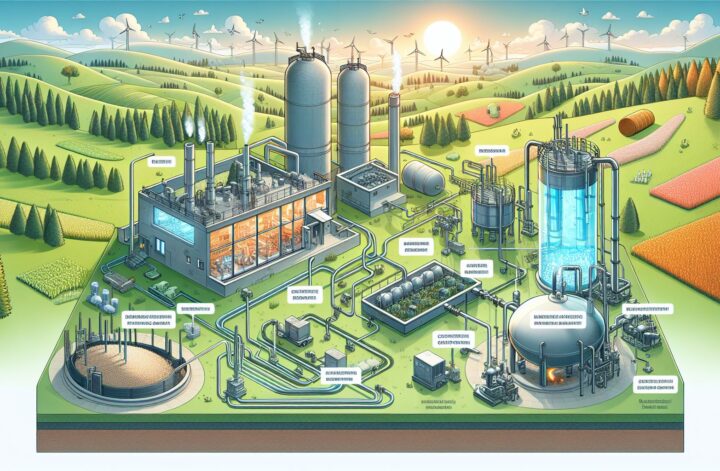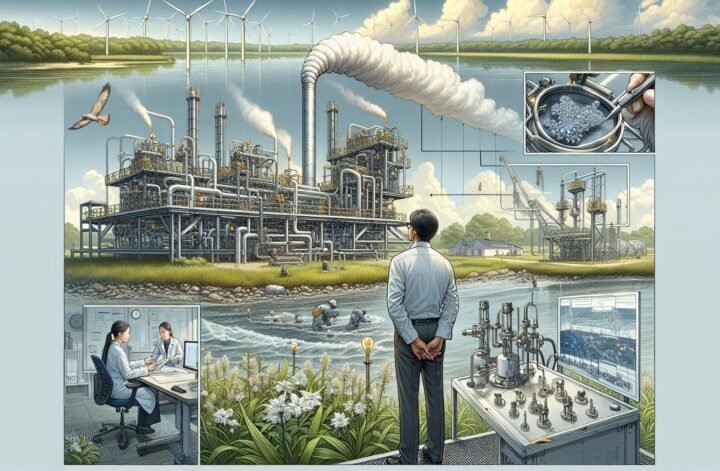Climate change has garnered global attention and rightfully so. It threatens to completely disrupt our current way of life and has the potential to exact enormous life and monetary costs. Greenhouse gasses, particularly carbon dioxide and methane, carry a lot of the blame. With the world heavily reliant on fossil fuels, we continue to feed this unbridled menace. But what if we could turn things around? This is where methane capture comes into the picture.
Understanding Methane
Often underplayed by its more famous cousin, carbon dioxide, methane doesn’t usually get the attention it deserves. Yet, methane is over 25 times more potent than carbon dioxide as a greenhouse gas over a 100-year period[^1^].
Methane is generated through both natural processes, such as decomposition in wetlands, and human activities including livestock farming and oil and gas operations. Certain human activities like drilling for oil and natural gas, transfer of these resources, raising livestock and landfills contribute to significant releases of methane into the atmosphere.
The Concept of Methane Capture
Simply put, methane capture is about curtailing the release of methane into the atmosphere by capturing and storing it for utilisation. How we capture methane depends on its source. In landfills, a collection system comprising wells and pipes collects gas generated from the decomposition of waste. In farms, manure storage facilities, digesters, and lagoons serve as methane sources. In the oil and gas industry, components along the oil and natural gas systems designed to reduce leaks can capture methane.
The captured methane gas can be used to generate electricity and heat or be processed into natural gas pipelines. It can also be employed in combined heat and power (CHP) systems. Thus, methane capture not only helps to address the issue of greenhouse gas emissions, but it also presents a viable solution to the current energy demand.
Methane Capture and Renewable Energy
The adoption of renewable energy is undeniably a key factor in our fight against climate change. However, shifting from fossil fuels to renewable energy requires bridging technologies, and this is where methane capture shines bright.
CHP systems, for instance, can generate electricity and useful thermal energy in a single, integrated system. CHP is capable of achieving efficiencies of over 80 percent[^2^], making it far superior to traditional systems where heat and power are produced separately.
Furthermore, methane captured from livestock waste can be used in biogas systems. Biogas, rich in methane, can be used in place of natural gas for heat generation, powering vehicles, and generating electricity. This way, methane capture could help reduce reliance on fossil fuels while simultaneously reducing greenhouse gas emissions.
How Can Methane Capture Benefit Us?
The benefits of methane capture stretch beyond emission reduction and the provision of renewable energy—it also presents economic and social benefits.
For instance, employing methane capture at landfills and farms can generate revenues, create jobs, and promote economic growth. In the oil and gas sector, efforts to reduce methane leakage can save valuable resources and promote operational efficiency.
In farming, methane capture can combat the bad odour, ensure better manure management, and reduce the risk of water contamination. Moreover, the digestion process in biogas systems can kill disease-causing pathogens, thus improving sanitation.
The Road Ahead for Methane Capture
Granted, methane capture comes with its own challenges. These include high costs of installation, lack of appropriate infrastructure, the need for skilled personnel, along with regulatory and policy issues. However, as the world hurtles towards what UN Secretary-General, Antonio Guterres calls the “point of no return”[^3^], it’s high time we pulled out all the stops.
To scale methane capture, we need sustained investments, technological advancements, and strong policy frameworks aimed at reducing methane emissions and promoting renewable energy. Additionally, efforts ought to be made to boost public awareness about the importance of methane capture and its potential benefits.
The potential of methane capture can hardly be overstated. If harnessed properly, it could help to drastically cut greenhouse gas emissions, offer a reliable source of renewable energy, and bring about significant benefits for the economy and society. After all, every journey starts with a single step, and methane capture could well be this very step in our quest to counteract climate change and meet our energy needs.
[^1^]: U.S. Environmental Protection Agency (EPA) “The Role of Methane”. Climate change science. [Link.](https://www.epa.gov/climate-indicators/greenhouse-gases#:~:text=Methane%20(CH4%3A%20The%20primary,and%20via%20the%20rearing%20of)
[^2^]: U.S. Energy Information Administration (EIA) “How does combined heat and power (CHP) work?” Link.
[^3^]: UN News “Climate Change – ‘The Point of No Return Is No Longer Over the Horizon'”. Link.




